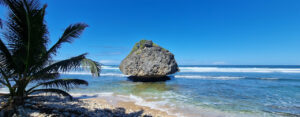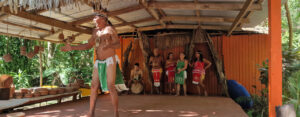
A Petra-frying Experience
Stepping off the plane at Queen Alia Airport in Jordan, it struck me immediately that I had significantly underestimated the heat. I’d read the forecasts, of course, but they’d seemed quite abstract until I was actually marinating beneath a sun intense enough to weld my T-shirt to my spine before I’d even reached passport control. The air shimmered like a Clint Eastwood desert scene, though sadly without the comforting prospect of stumbling towards an oasis. Instead, there was only the relentless glare and dusty emptiness stretching in every possible direction. My taxi into Amman had all the cooling properties of a hairdryer aimed directly into my face, but with the windows down and Arabic pop crackling merrily through blown speakers, we rattled along cheerfully towards my overnight pit stop.
The reason for this fleeting visit to Jordan’s bustling capital was an obscenely early start the next morning, catching a bus to Wadi Musa, Petra’s improbably cheerful gateway town. Armed optimistically with litres of suncream, enough bottled water to irrigate the Sahara, and a portable fan that had roughly the blowing power of an asthmatic pug, I shuffled towards Petra’s famous entrance. The Siq, as it’s known, is essentially a narrow, winding corridor carved dramatically through rust-coloured cliffs soaring almost two hundred metres overhead. Wandering into this geological crack provided merciful moments of shade and some brief respite from the scorching sun. Occasionally, I paused to watch other tourists pass—some perched atop camels, others bouncing along in suspiciously air-conditioned golf carts, proving yet again humanity’s relentless quest to avoid exertion at all costs. By this point, I’d already slathered on half my suncream supply and managed to misplace the feeble fan, so the sight of an indifferent camel drooling in my direction had genuinely started to look appealing.
Then suddenly, after nearly half an hour zigzagging, the narrow walls parted to reveal Petra’s legendary Treasury—or Al-Khazneh—standing impossibly ornate and perfect, as though freshly chiselled yesterday. It quite well could have been, I wouldn’t have known any different. While I knew what it was supposed to look like—mainly by watching Harrison Ford gallop past it in a fedora—little could have prepared me for the actual, breathtaking reality. Both enormous and delicate at the same time, her grand columns and friezes are sculpted from the ochre sandstone as intricately as if carved from icing. Everyone around shared my stunned silence, mouths gaping open in mutual astonishment—even the fanny-pack-clad, doughnut-devouring, golf-cart-hiring American tourists briefly ceased their chatter, a minor miracle in itself.
Beyond the Treasury, Petra sprawled further and far more impressively than my limited imagination had ever guessed. There was a full-sized Roman theatre (yes, they made it this far), chiselled directly into the cliff face, where ancient Nabateans presumably sat through performances wondering if they’d remembered to park the camel somewhere shady. Endless tombs, temples, and stairways dotted every hillside, each carved with impossible precision. After traipsing along Petra’s main thoroughfare, I stumbled upon the imposing Qasr al-Bint temple—the city’s ancient religious centre—before ascending rocky trails towards higher vantage points. Here, Jordanian flags whipped proudly in the breeze, and Petra stretched below me in a breathtaking, rocky vista.
After several hours of melting slowly into the desert floor, a trip to the nearby museum suddenly felt profoundly appealing—if only for the blessed, life-saving miracle of air-conditioning. Inside, the museum revealed delicate marble busts, intricate weaponry, and an astonishing array of everyday objects from the Nabateans who, quite remarkably, chose to build their metropolis in a region hotter than a blast furnace. Here was a civilisation that somehow managed to produce impossibly detailed mosaics and sophisticated artworks while simultaneously pioneering complex irrigation networks and city planning that arguably surpassed every contemporary culture on earth. Standing among their relics, it was difficult not to feel absolutely astonished by a society that flourished brilliantly where most would have wilted like a lettuce in a heatwave.
Emerging from the museum, I found that the setting sun had deepened Petra’s cliffs to a radiant, glowing rose-red. Frankly, nowhere this side of the Taj Mahal could claim such photogenic lighting conditions. Petra at dusk is genuinely magical. It is also undeniably exhausting: my feet felt as though tenderised by Michel Roux, and I was becoming increasingly convinced that at least one blister had achieved dimensions worthy of scientific investigation. Still, the discomfort paled against the wonder of the day. As for tomorrow, I would head deeper into Jordan’s deserts to spend a night under the stars with a Bedouin or two and, doubtless, discover the true extent of sand’s astonishing ability to infiltrate every conceivable crevice of the human body. On to Wadi Rum.
J






















